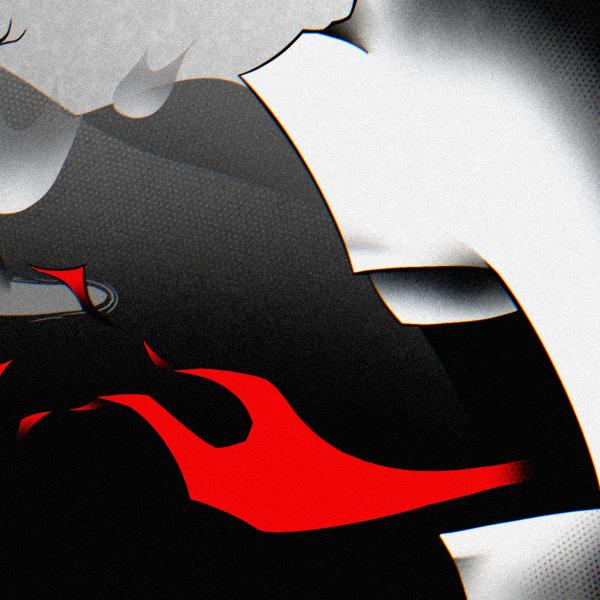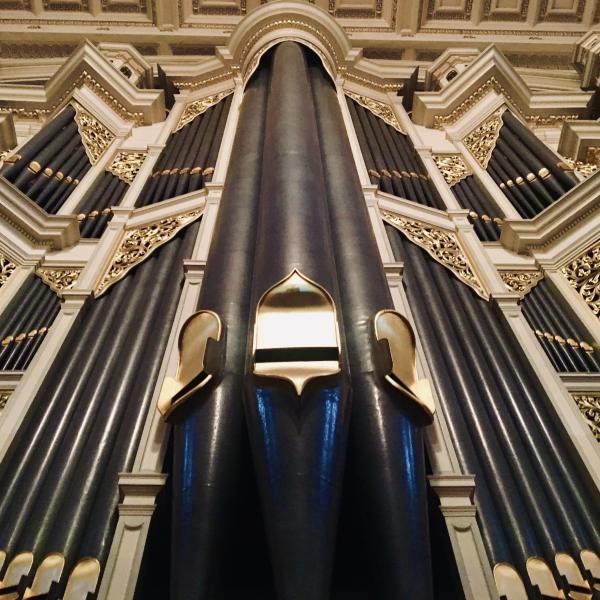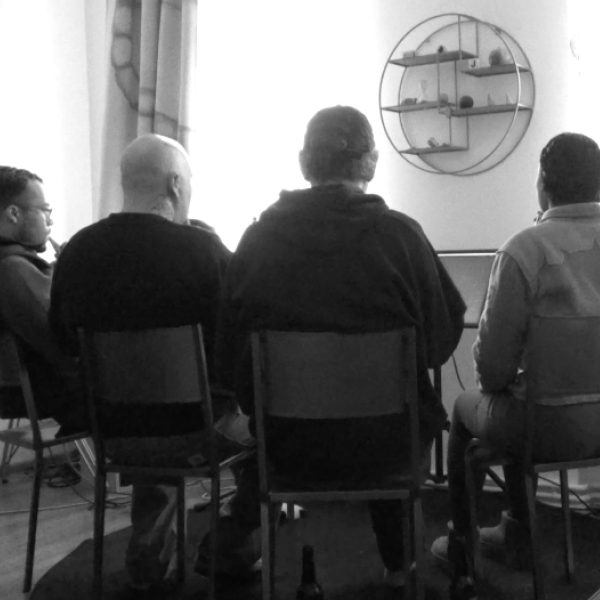Ruby Solly's Locked Room

Artist Talk: 17th July
Intro:
- ‘The Locked Room’ was an art pedagogy experiment conducted at Londons St Martins School of Art in 1969 by Peter Atkins, Garth Evans, Peter Harvey, and Gareth Jones.
- The basic rules of the experiment were that students were placed in a locked room for set hours during the semester where they were not allowed to speak to their lecturers or fellow students. They were encouraged not to speak to people about the experiment or to other participants about their experiences. They were given set materials and were only instructed on what they could not do. In some records it states that people’s art work was taken away at set times, and in others it states that they would suddenly arrive some days to find their artwork gone and a block of a new material for them to use in its place.
- The Locked Room was a response to the emerging conceptualisation of art practice in the 1960s. The students were, essentially, starting from scratch. Such a tabula rasa was intended to provide an alternative to traditional teaching methods. As Kardia said: “I wanted to put them in an experiential situation where they couldn’t grasp what they were doing. What I wanted was ‘existence before essence’.”
- This really struck me in terms of thinking in Te Ao Māori and in terms of action based research methods and kaupapa Māori research frameworks where we prioritise the process over the product and have the result embedded within that process itself - It also tied in to lock down and looking at how we transition out of that, or use that state of rāhui, or restrictions, to create growth and personal reflection.
My Experiment:
- 10:30 – 4, for one and a half weeks. So I could observe matariki better with a wananga in the middle and also so I could transition out which was something lockdown wasn’t good for, by bringing people into the space over the last few days of the two weeks. Also so I could observe how this had changed how I played with others.
- Limited materials, cello, taonga pūoro, merlin, no composition software, no writing things down, recording allowed but deleted at 4pm each day.
- Alone in the room, no one able to listen
- Not able to talk to people about what I do or share work
Disclaimer:
- I’m going to tell you about this process. But mostly I’m going to be talking around it.
- I’m not talking about the work I did, but talking about things it made me think about. Things I found difficult or easy, and about realisations I had during this time about music and pūoro and how the restrictions helped me get there.
Abandonment of ego
- With a jazz school background and being young and female, I’ve learnt to prove myself musically and technically before I can just settle into playing. This took that away, and I could just settle into playing.
- By removing the fear to prove myself, I could just play without that ego based playing. By doing this I could embody the mauri of the piece I was creating more than feeding the ego within myself.
Removal of fear of judgement
- Ties into the lack of ego in the space.
- This process has meant that I’ve analysed my ways of being within music and thought about the classical and academic music psyche which has a constant pressure to make a ‘nice’ sound. This cuts down on the full range of emotion and sonic spaces that we can inhabit.
- The lack of people listening meant I could fully inhabit these ‘not nice’ sounds and think about the whakapapa of them, where they might come from and through that what they represent.
- This is a concept I’d thought about in writing a lot where language is more direct, but not within music were it can be more coded.
Freedom to be frank and brutal
- Sometimes we want to find the most refined way to say something, in terms of lyrical content, to the point where it no longer feels like we’re saying what we need to.
- This way of working removed that judgement and meant I could say things as they came to my head by improvising with words the way I would improvise with music or working on that as a goal within singing.
Ritual as process and product (lines between warming up and creating)
- I’d think really carefully about setting up to play and create a sense of ritual for starting each day because the frame of mind was the work. At the start I would play in darkness moving into light as a concept, or improvise around a word or around a certain piece or position of the self and have no goals around that, just to have it as a warm up which more often than not set the intention for the day.
- Warming down was a part of the process well, reflecting on what the day was and what was learnt.
Importance of ‘bouncing off’, not being in a vacuum, the collaborative element rather than the competitive element
- After a while without having provocations from other players I began to get more and more detailed on the changes I was making to my process and playing.
- but big changes and discoveries were becoming less and less without having provocations from other people to make that happen.
- I realized that existing in artistic vacuum, especially when the work your doing is non visual, and can’t be consumed all at once like a single sound or a physical art piece to an extent, it’s harder to get a grip on what you’ve done or are doing and that’s where witnessing is important.
Difficulties
- Lack of provocation from being in too safer place. Thoughts, stories, playing of others is what prompts things from within me to play and create, without that provocation it’s hard to access certain things, even things that are within the self. We don’t establish identity until it comes into contact with other, so when there is no other it becomes harder to grasp style, identity etc
- There was a similar feel to lockdown with social isolation and unknown elements. Most of the time it was great, a small part of the time it was awful. Isolation can be a big problem in other arts disciplines, writing etc, and experiencing more of what that was like and understanding how music is often more collaborative in real time than other disciplines. I learnt not to take this for granted. This left me wanting to talk and collaborate with other people, rather than feeling I needed to. For an only child who can spend weeks talking to no one quite happily this was huge and unexpected for me.
- A sort of existential ‘Waiting for Godot’ feel where each day is fresh and you can’t carry things over, yet you’re driven as a person to create and have something tangible. Fighting against that is hard. I found myself coming home wanting to create or achieve something; do some writing, drawing etc. This would make me more tired and frustrated within the experiment. I dealt with this by looking for tohu that weren’t physical; a knowing, a new skill, a sense of peace or heightened emotion.
Transitioning Out
- When I started to move out of the experiment, I desperately wanted to play with other people, which is the opposite to what I usually crave from music because I play supporting people 90% of the time that I engage with it.
- It was within these spaces that I could really see how my playing had changed and how my thinking had changed. The changes in my musical identity bcame solidified when introduced to the other to become ‘normal’.
- By analyzing my sounds more deeply, I had unknowingly cultivated a sense of musical empathy within my playing to think more about what other people were trying to communicate and what I could do to support that or make it easier for them to express that.
Things I will take away
- Being able to use rāhui, isolation and limitations as tools to restore, and to look into your own processes.
- Isolation is a tool, not a way of creating. In te ao Māori with writing and pūoro, we are taught to work with others to make sure we are held to account for our work. This is crucial and something that separatism doesn’t support.
- Looking at your own processes and ways of communicating through your art forms helps you understand how others do this, and helps you learn to speak the same language as them when you’re working toether.
- My process in figuring out big things needs to at least end with wānanga, without that I feel like there’s no true end, and no giving back to what I’ve prompted to think from.
- Ritual is a really useful tool in creating and we skip whole parts of the creative process because of time, money and product. We have ceremony and ritual within te ao Māori that mark beginnings and endings, and we can utilize these in creative work. Having time to set intentions and to become acquainted with the landscape in all forms historical, physical, mental, etc, before creating work within that landscape allows us to create work that is a part of all these things and connects back.
- Reflection is reward in itself.

Kai Tahu, Kāti Māmoe, Waitaha
Ruby Solly is a Kai Tahu musician, taonga puoro practitioner, music therapist and writer living in Wellington. She has played with artists such as Yo-Yo Ma, Whirimako Black, Trinity Roots, and The New Zealand String Quartet as both a cellist, and a player of traditional Māori instruments (ngā taonga puoro). She has also worked as a session musician and recording artist with groups such as So Laid Back Country China, Jhan Lindsay, Strowlini Orchestra, and many other artists around Wellington. In 2019 she completed a Masters thesis in the therapeutic potential of taonga puoro in mental health based music therapy, while working in schools, hospitals, prisons and with private clients from iwi around the motu. She also has experience as a composer with pieces commissioned by the New Zealand School of Music in association with SOUNZ, as well as in film work in association with Someday Stories, and the Goethe Institute with Wellington Film Society.
Ruby is also a published poet and has been published in journals associated with many of New Zealand’s universities such as Landfall, Sport, Turbine, and Mayhem. She has also exhibited poetry in Antarctica and New Zealand, and was a runner up for the 2019 Caselberg Trust International Poetry Prize. Additionally, Ruby is a script writer and has found success with her film Super Special which shares knowledge about Māori views of menstruation through narrative. The film aired on Māori TV, and will also air at the LA Women Film Fest.








